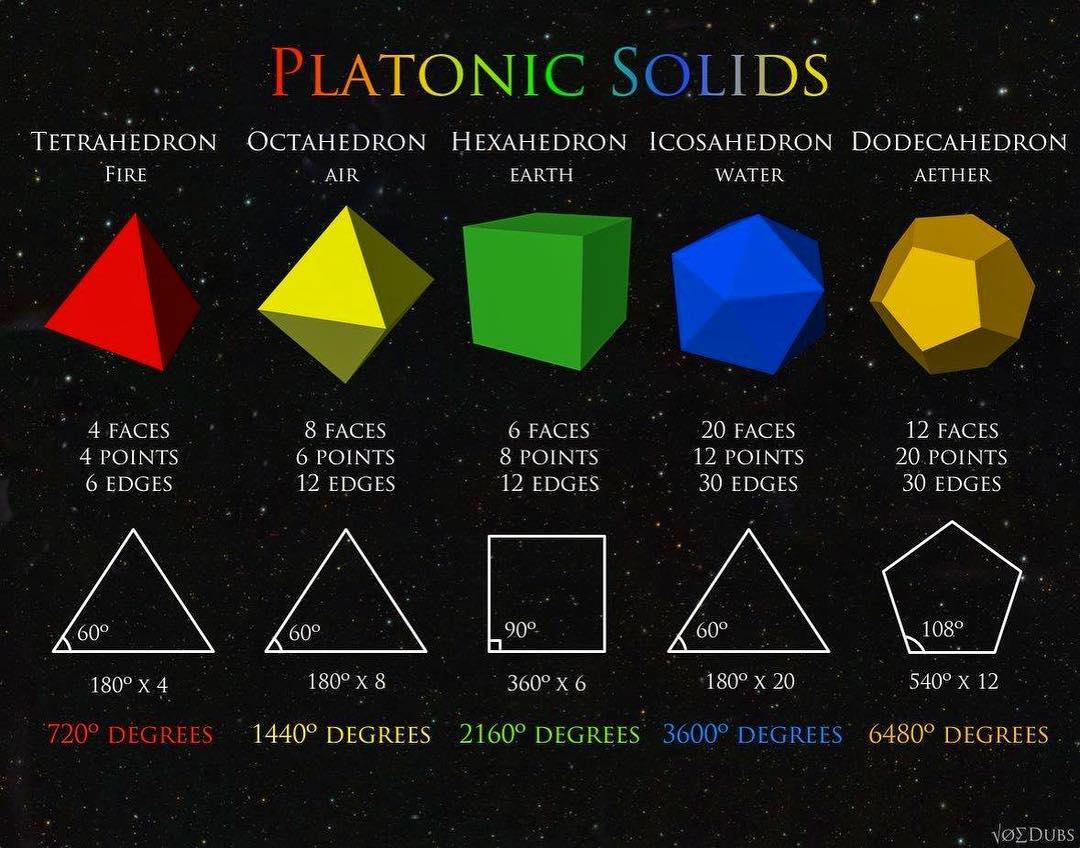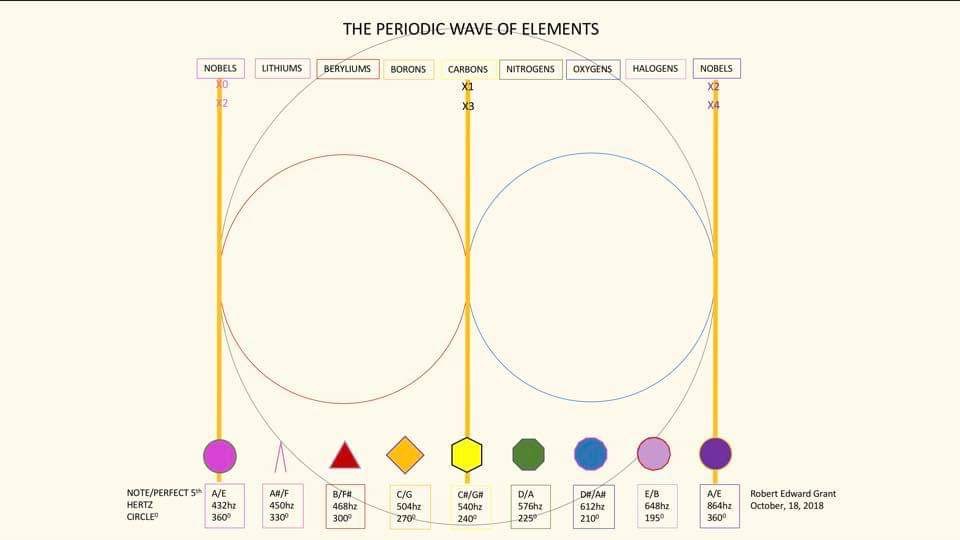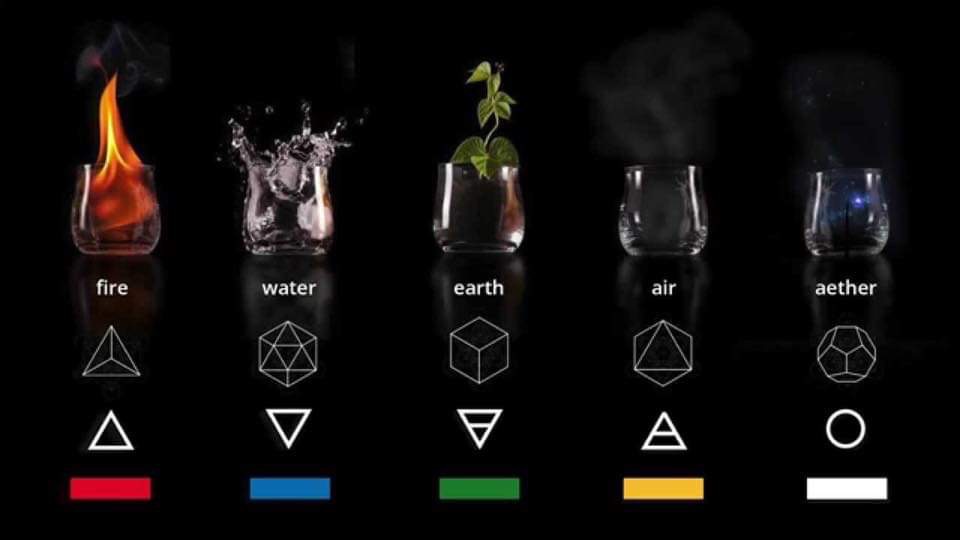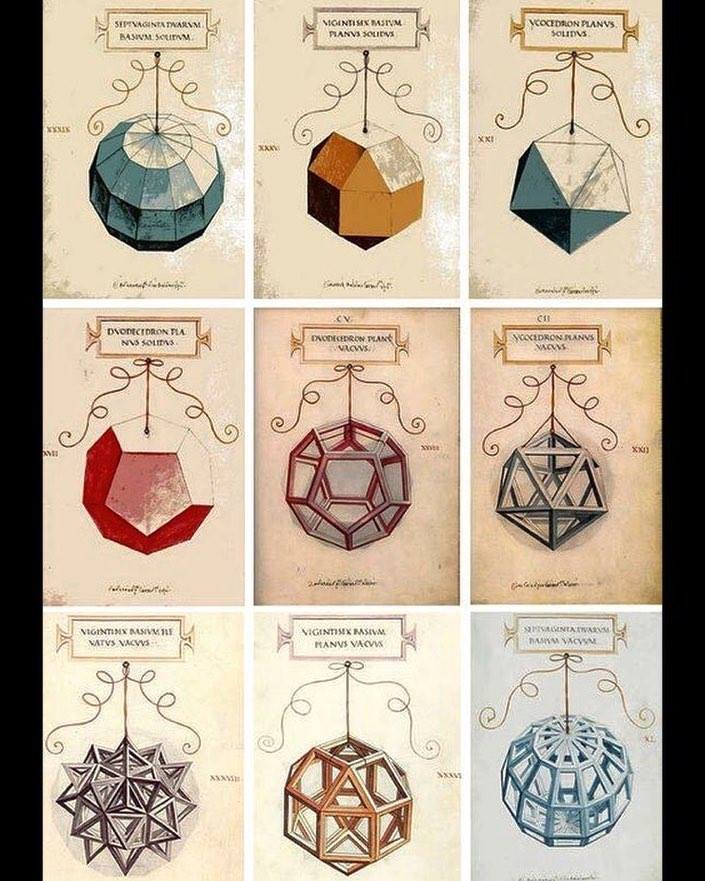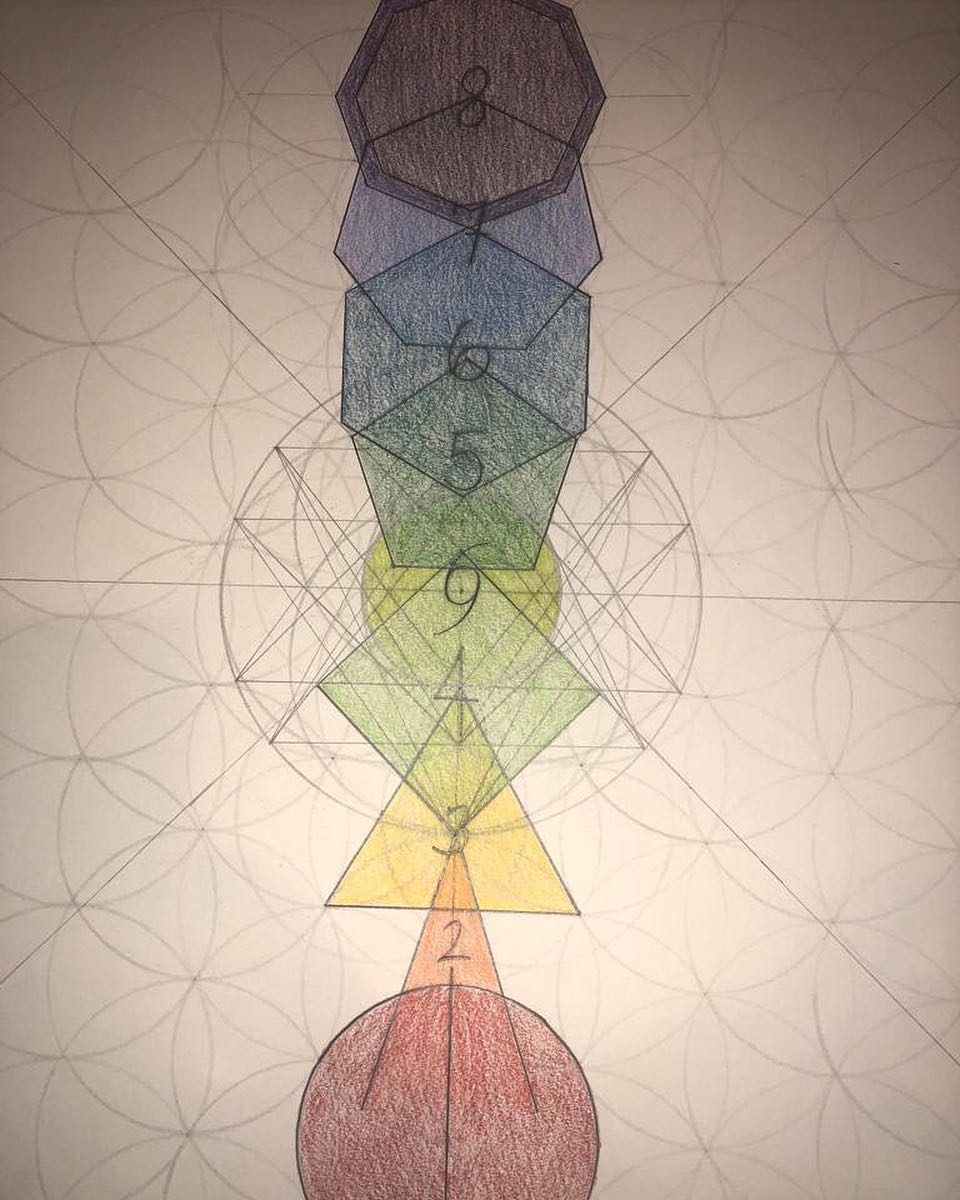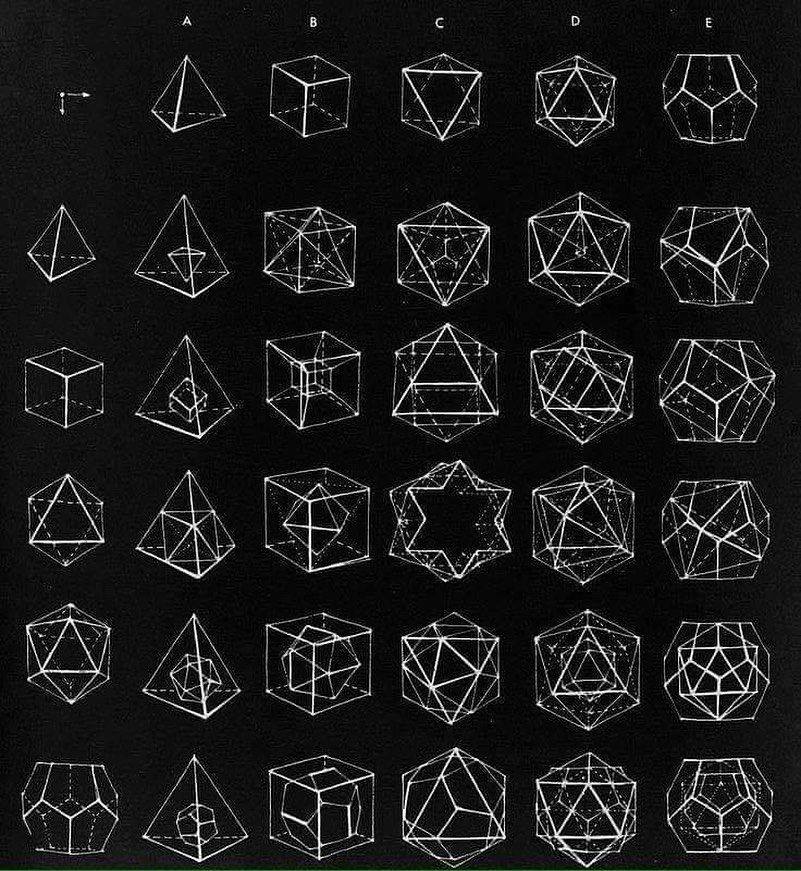
All platonic solids arise from the flower of life, itself arising from the vector equilibrium. These are the forms of stability and balance.
here are only 5 possible shapes in the universe of creation that Pythagoras defined as being a Platonic Solid.
They had to obey the following 3 conditions:
1 - The shape must fit inside of a sphere ie: the all the corners or vertices are touching the inside of the sphere.
2 - The shape must have all its faces or polygons the same (eg, triangles or squares or pentagons or hexagons etc) thus all their angles are the same.
3 - The shape must have every edge length being the same.
The 5 shapes are:
1 - Tetrahedron (4 triangles, 6 vertices, 6 edges)
2 - Cube (6 squares, 8 vertices, 12 edges)
3 - Octahedron (8 Triangles, 6 vertices, 12 edges)
4 - Icosahedron (20 triangles, 30 vertices, 20 edges
5 - Dodecahedron (12 Pentagons, 20 vertices, 30 edges)
These five Platonic Solids exist also in the biological world. They exist as single celled planktons called Radiolaria, which when dying leave an exo-skeleton in the precise shape of these 5 Solids.
